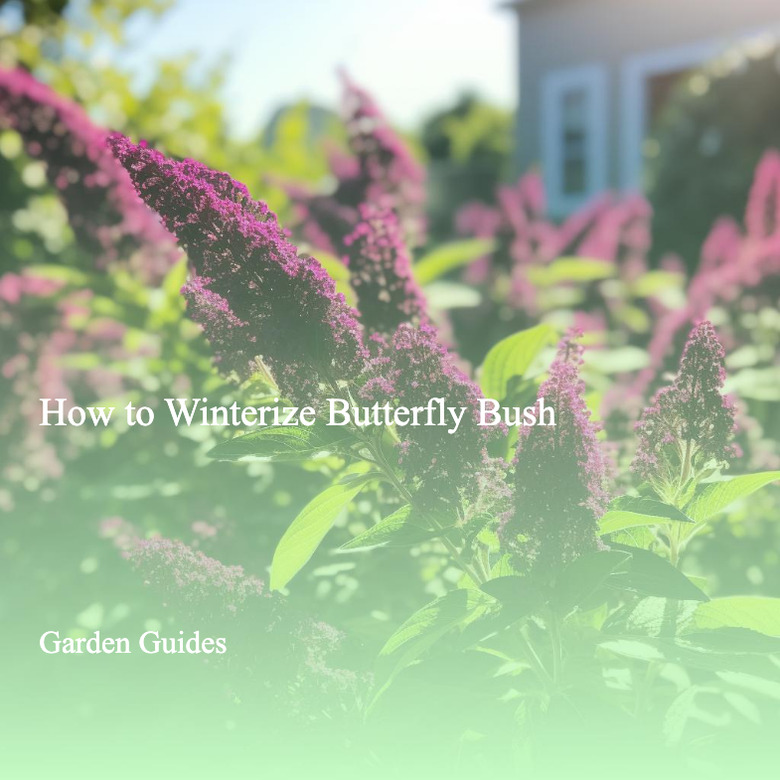How To Winterize Butterfly Bush
Butterfly bushes are a popular addition in many gardens as they attract multiple butterflies and hummingbirds. They have beautiful long purple, white or pink flowers, depending on the type you have. Winterizing them is quite simple, as these bushes require very little care. However, there is a certain time to prepare butterfly bushes for the winter.
Step 1
Avoid pruning butterfly bushes in the fall. Butterfly bushes tend to fare better when pruned in the spring, just before new growth starts. Leaving the dead twigs and limbs on the butterfly bush in the winter helps the root ball store nutrients and protects it for the winter.
- Butterfly bushes are a popular addition in many gardens as they attract multiple butterflies and hummingbirds.
- However, there is a certain time to prepare butterfly bushes for the winter.
Step 2
Apply a heavy layer of mulch around the base of the bush before the first frost in the winter. This will hold warmth and moisture around the bush to protect the root ball from freezing temperatures. If you prefer, cover the bush with a cloth material but it is not necessary.
Step 3
Cut back the tops of limbs to remove all dead limbs and twigs in the spring. Cut at a 45-degree angle just above the green part of the limb. New growth will start at this cut in the spring. This type of pruning will produce a bushier plant and much more blooms than the previous year.
- Apply a heavy layer of mulch around the base of the bush before the first frost in the winter.
- Cut back the tops of limbs to remove all dead limbs and twigs in the spring.
Step 4
Transplant any butterfly bushes in the winter months when they are dormant if you need to plant them in a different location.
Step 5
Apply fertilizer in February before new growth starts with a fertilizer that is suitable for roses. Follow all application directions on the fertilizer.
Butterfly Bush & A Butterfly Weed
A mature butterfly bush typically reaches 6 to 10 feet tall with an equal spread. Butterfly weed, on the other hand, is a perennial flower reaching only 1 to 3 feet tall. Where color is concerned, the many cultivars of butterfly bush have butterfly weed beat. White, different shades of pink, purple and blue are all commonly seen in nurseries and garden centers. Fertile, well-drained soil is an essential requirement of the butterfly weed, although butterfly bush will tolerate nearly every soil condition except for wet, particularly once it's established. Butterfly weed is tricky to transplant, but readily self-seeds — a decent patch of this colorful, native perennial is possible after a few years from just one plant. Throughout summer, butterflies, moths and other pollinators will swarm butterfly bushes in grand displays of fluttering color. As a native species, the butterfly weed is an important host plant to native wildlife.
- Transplant any butterfly bushes in the winter months when they are dormant if you need to plant them in a different location.
- Fertile, well-drained soil is an essential requirement of the butterfly weed, although butterfly bush will tolerate nearly every soil condition except for wet, particularly once it's established.
Things Needed
- Butterfly bush
- Pruning shears
- Mulch
